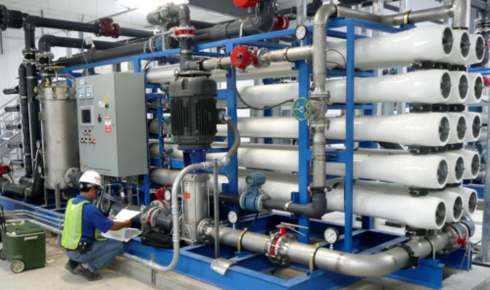Breathe Easy, Drink Clean: Why Every Home Deserves a Detox
November 25, 2025

There’s something quietly unsettling about not knowing what’s in the air we breathe or the water we drink. We go about our routines — morning showers, filling water bottles, flipping on the fan — barely stopping to consider what might be sneaking in with every sip or breath. But the truth is, contaminants like PFAS, airborne allergens, and heavy metals are more common than most of us care to admit. And while it may sound dramatic, ignoring them is like living with a silent intruder.
In 2025, we’re not just talking about living smarter — we’re talking about living safer.
A Ticking Time Bomb in Our Water
You might’ve heard the acronym tossed around lately: PFAS — per- and polyfluoroalkyl substances. It’s a mouthful, sure, but the impact? That’s no small thing.
PFAS are known as “forever chemicals” because, well, they never really go away. Used in everything from nonstick pans to firefighting foam, they seep into our environment — and stay there. We’re not just talking about industrial zones either. We’re talking household taps, local reservoirs, and community wells. And exposure over time? That’s been linked to everything from immune issues to certain cancers.
The good news is, people are waking up. Awareness around PFAS reduction is gaining steam. Municipal water systems are starting to test and act. But that’s a slow-moving ship. For families wanting to take immediate action, point-of-use systems and home filtration are leading the charge.
Why Clean Water Isn’t a Luxury Anymore
Here’s the deal: clean water isn’t just about clarity. You can’t “see” arsenic, lead, or even PFAS. That’s why bottled water isn’t the knight in shining armor many assume it to be. It’s expensive, generates plastic waste, and often isn’t tested for the same things you’d expect from proper filtration.
That’s where reverse osmosis systems come in.
RO systems have long been hailed as the gold standard in home water purification. They force water through a semi-permeable membrane, weeding out a whole parade of contaminants — PFAS included. You’ll also cut down on nitrates, chlorine, fluoride, and a bunch of stuff you probably didn’t realize was swirling around your “safe” tap water.
Installation’s simpler these days, too. Under-sink models, tankless units, even whole-home setups — they’re all more affordable and compact than a decade ago. And maintenance? A few filter changes a year. Totally doable.
It’s Not Just the Water — It’s the Air, Too
We spend roughly 90% of our time indoors. You’d think we’d treat the air inside our homes like royalty. But for most people, indoor air is riddled with dust, pet dander, VOCs (volatile organic compounds), and if you’re unlucky — mold spores or lingering wildfire smoke. The kicker? Poor indoor air quality can lead to long-term respiratory problems, headaches, sleep issues, and a general foggy-brain syndrome we too often chalk up to “just being tired.”
It doesn’t have to be that way.
Today’s air purification tech is surprisingly sleek and smart. Forget those clunky filters of yesteryear. We’re talking HEPA-grade systems that trap 99.97% of microscopic particles, carbon filters that neutralize odors, and UV-C or ionizing units that zap airborne bacteria. Many modern purifiers sync to apps, monitor your air in real time, and adjust automatically. They’re like air butlers — quiet, dependable, and always on the job.
Whole-Home Strategies: Small Habits, Big Results
Of course, gadgets alone won’t save the day. Real change comes from small, conscious shifts in lifestyle:
- Switch to PFAS-free cookware. That means ditching old non-stick pans in favor of stainless steel or ceramic.
- Open windows strategically. Get that cross-breeze when outdoor air quality is decent. But keep things shut during high-pollen days or wildfire events.
- Use exhaust fans. Cooking, showering, cleaning — all release moisture or VOCs into the air. Vent them out.
- Test your water. A simple home water testing kit can uncover what’s lurking in your supply. Knowledge is power.
- Clean your filters. HVAC systems, vacuum cleaners, air purifiers — they all have filters that need love.
These aren’t grand, Instagram-worthy moves. But they’re the kind of quiet, consistent actions that build a safer, cleaner space to live in.
Health Is a Home Investment — Not a Trend
The market’s buzzing right now — people are getting serious about wellness. But while biohacking and fitness gadgets get flashy press, let’s not forget: the air we breathe and the water we drink form the foundation. They’re not sexy, but they’re essential.
Think of your home like a micro-ecosystem. If you invest in the right tools — a good reverse osmosis unit for your drinking water, a reliable purifier for your breathing space, and some PFAS-free products in your kitchen — you’re building a buffer. You’re reducing long-term risks. You’re giving your immune system one less battle to fight every day.
You don’t need a six-figure salary or a sprawling mansion to make that happen. Just awareness, and a bit of action.
Final Thoughts: Choose Peace of Mind
It’s easy to put off this kind of stuff. Life gets loud — bills, emails, groceries, deadlines. But when things quiet down and you take that sip of water or breathe in deeply, wouldn’t it be nice to know you’re safe?
A home should feel like a retreat. A haven. Not a place where hidden threats lurk behind faucets and vents.
So here’s the takeaway: start somewhere. Filter your drinking water. Get a basic air purifier for your bedroom. Read a label. Replace that ancient Teflon pan.
Because this isn’t about fear — it’s about freedom. The freedom to live well, without the weight of “what if” hanging over your head.
